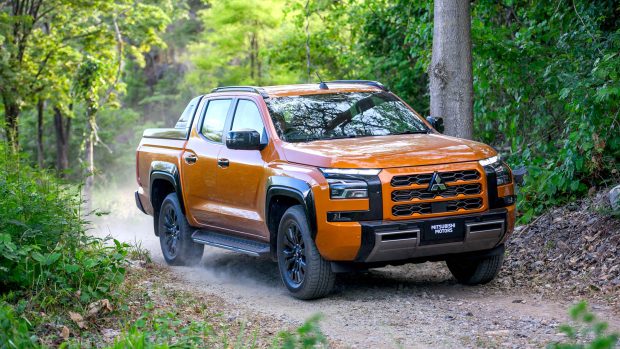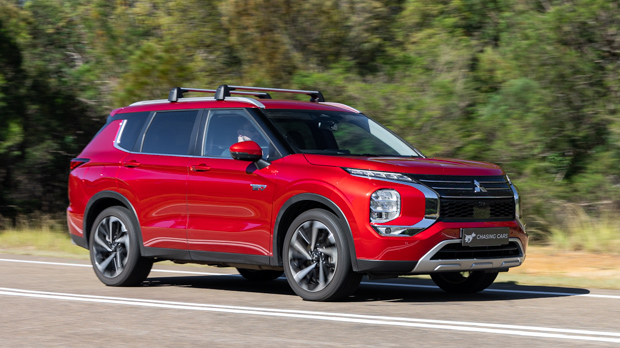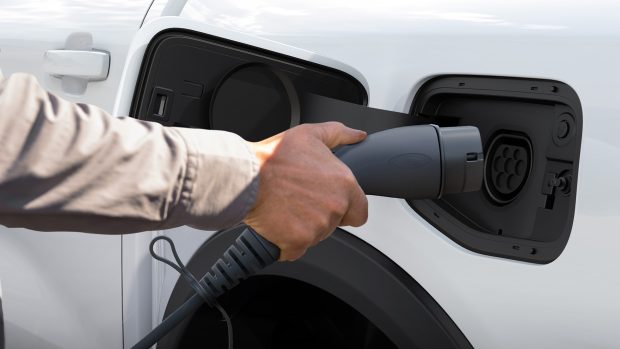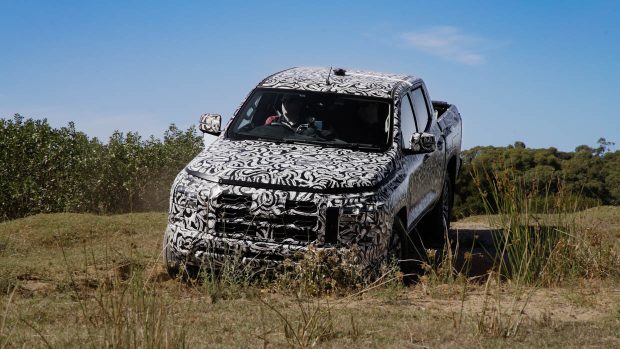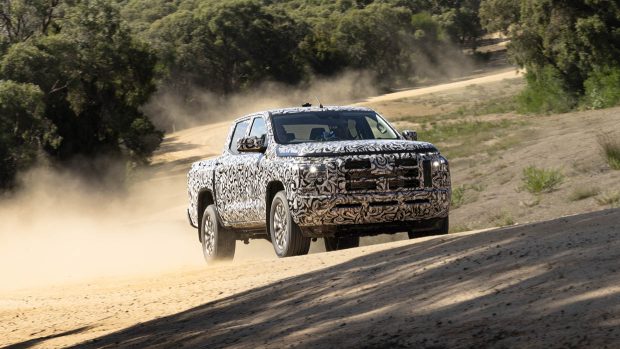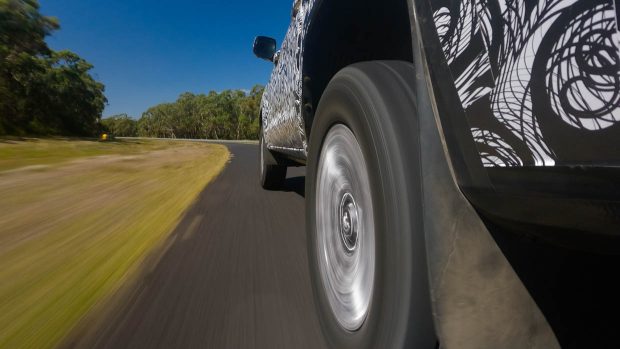-
Car Reviews
- All reviews
- Midsize SUVs
- Small cars
- Utes
- Small SUVs
- Large SUVs
- Large cars
- Sports SUVs
- Sports cars
- Vans
Latest reviews
- Car News
-
Car Comparisons
Latest comparisons
- Chasing Deals
Mitsubishi exploring fuel-saving solutions for new Triton; plug-in hybrid still on the table, but poses challenges
Mitsubishi says a plug-in hybrid version of its new-generation Triton dual-cab ute is still a possibility, as it explores fuel-saving solutions that could eventually see the model go full-electric.
The all-new generation Triton is due in Australia February 2024, and while its new 2.4-litre twin-turbo diesel four-cylinder is now 10 percent more efficient – with an ADR81/02 combined fuel economy claim of 7.7L/100km – Mitsubishi will need to make far greater gains into the future as legislators continue to clamp down on manufacturers.
Mitsubishi champions PHEV technology in products such as its Outlander and Eclipse Cross SUVs, and it remains a possibility for Triton, along with other forms of hybridisation, says Mitsubishi Australia CEO Shaun Westcott.
“I’ll quote [Mitsubishi executives] on record in Thailand saying PHEV and other forms of hybridisation are under study for Triton,” Westcott told Chasing Cars. We reported on Mitsubishi’s study of BEV and hybrid power for Triton back in July.
In its Outlander SUV, a small 20kWh battery pack supplies up to 84km WLTP electric-only range, and is able to be recharged from flat to full in 9.5 hours on a 240-volt wall outlet.
While offering a PHEV in an SUV is one matter, Westcott said offering a PHEV Triton would pose an engineering challenge.
“Various forms of powertrain, for the simple reason that finding enough batteries and then being able to give it the payload and towing capability it needs as a working vehicle with current battery technology, is very difficult. It’s not like we can flick the switch one day and it’s a BEV,” he said.
“I think there’s an evolutionary process, because of the towing and payload capability the vehicle needs to have.”
Towing capability and payload are challenge for hybridising dual-cab utes, as Ford discovered with its new PHEV Ranger.
Along with offering around 45km of electric-only range, Ford has managed to preserve the payload and 3.5-tonne towing capability of its best-selling Ranger, despite the addition of a heavy lithium-ion battery pack.
Westcott said an electrified version of the Triton was an inevitability, but wouldn’t be drawn on timelines.
“By 2035 we will have 100 percent of our vehicles [electrified],” he said. “But there’s a journey to get there.
“It’s not just us, but it’s the entire industry. The current battery technology is not where it needs to be [and] lithium and cobalt may need to change. And that’s not only us, but all OEMs, that’s where our big money is going: serious money, billions of dollars going into that, industry-wide.”
Mitsubishi has committed to “electrifying” all its new vehicles by 2035 – noting that could mean simply making them all at least hybrid.
Westcott told Chasing Cars that Australia should not discount the emissions-reducing potential of plug-in hybrids, as the nation and world races towards fully electric vehicles – and legislators impose costly rules and deadlines on manufacturers.
“We believe PHEV has a lot more legs in Australia,” he said.
“It’s not fully understood by consumers. We think there’s a massive opportunity with PHEV in the short-term until some time as Australia catches up. This is not just about [electric vehicle] charging [infrastructure]. Our minds kind of blank out after reading, ‘we need more charging stations’. Actually we need a lot more than that.”
Wescott said governments needed to do more to convert electricity generation from traditional fossil fuels to renewable sources.
“I’m having those discussions with various ministers in government. I’m saying, ‘minister, where’s the power coming from?’ If it’s a coal-fired power station, we’re just moving the problem from the tailpipe to the smokestack,” he said.
“It doesn’t have to be just government, it can be public-private partnership, or private investment, but we have to look at getting more renewable energy on the grid to validate or get the full benefit of the EV”.
“You can pass as many laws as you like to force car companies to do BEVs (battery electric vehicles) but if you’re not doing the right thing and creating the same pressure upstream in terms of where the power comes from, and making sure it’s renewable, then we’ve missed a trick”.
Mitsubishi was an early pioneer of electric vehicles with its i-Miev but has since fallen behind the greater industry, now racing to catch-up before internal combustion vehicles are outright banned in some jurisdictions, such as the UK, EU and California in the US by 2035.
Latest news
About Chasing cars
Chasing Cars reviews are 100% independent.
Because we are powered by Budget Direct Insurance, we don’t receive advertising or sales revenue from car manufacturers.
We’re truly independent – giving you Australia’s best car reviews.
